The art world as spectacle
Published in Nuda:Ego
During the long month of November art critic Maria Kjær Themsen and artist Esben Weile Kjær had an e-mail correspondence about trying to survive in the art scene, and about anxiety, gazes, consumerism, parties, book launches and the idea of working collectively.
★
Esben Weile Kjær 3. nov. 2021 23.35
Dear Maria
Always lovely to bump in to you. Thank you! Fun that you say that… People often comment on my look/style and I’m always I bit surprised cus I think I wear kind of basic items. I guess it’s about how I wear the clothes and how I put it together then.
I was on my way to have lunch at Café Petersborg with my friend Mira who just got a baby dog named Sonny. It’s a mix of a husky and a Doberman.
I’m in between Frankfurt and Copenhagen at the moment trying to finish my educations. I will graduate this summer and I’m kind of excited about it but also a bit scared. I’m going to LA on Monday and it’s the first time I have been out of Europe since covid. Next month I’m showing a new performance work at an empty castle here in Denmark called Marienlyst, so I’m trying my best to stay focused and healthy.
Maria Kjær Themsen 4. nov. 2021 09.27
Wow, my nervous system is reacting just by reading about your life… and tell me: How exactly do you stay “focused and healthy?” No alcohol and late nights? Or is the social life, having lunch with a friend x, that keeps you on track?
I think it is a constant struggle in the art world – to keep sane and healthy. For twenty years I’ve been working freelance, and since I have no colleagues in my daily working life as a writer, I really have a need for a certain social life, which often means going out late, or drinking too much in the weekdays. At other times I have a strict regularity in my mental practices, meditation, and spiritual rituals, but all in all, the art world keeps dragging you towards more ego, and less spirit, and this is draining my soul. How do you experience it? You, who has this spectacular appearance, and therefore always will be looked at a great deal. Also, your works themselves, as I experience them, is much about looking and being looked at. What is it with ‘the gaze’ that interests you? And is there a shadow side to all this looking?
I read last night a passage in Hannah Arendts Åndens Life (eng. The Life of the Mind) where she talks about appearance: “To be alive means to be possessed by an urge toward self-display which answers the fact of one’s own appearingness”. She is basically saying that for both humans and animals appearance and to be looked at or sensed by others is the most central thing in our existence – “Der eksisterer intet og ingen i denne verden, hvis væren ikke forudsætter en tilskuer.” When I read this I thought about you and your artwork, which at its core really points to this fact… We are living in a world of phenomenon, and we are part of that world.
But it also makes us mad, doesn’t it? To constantly make an appearance?
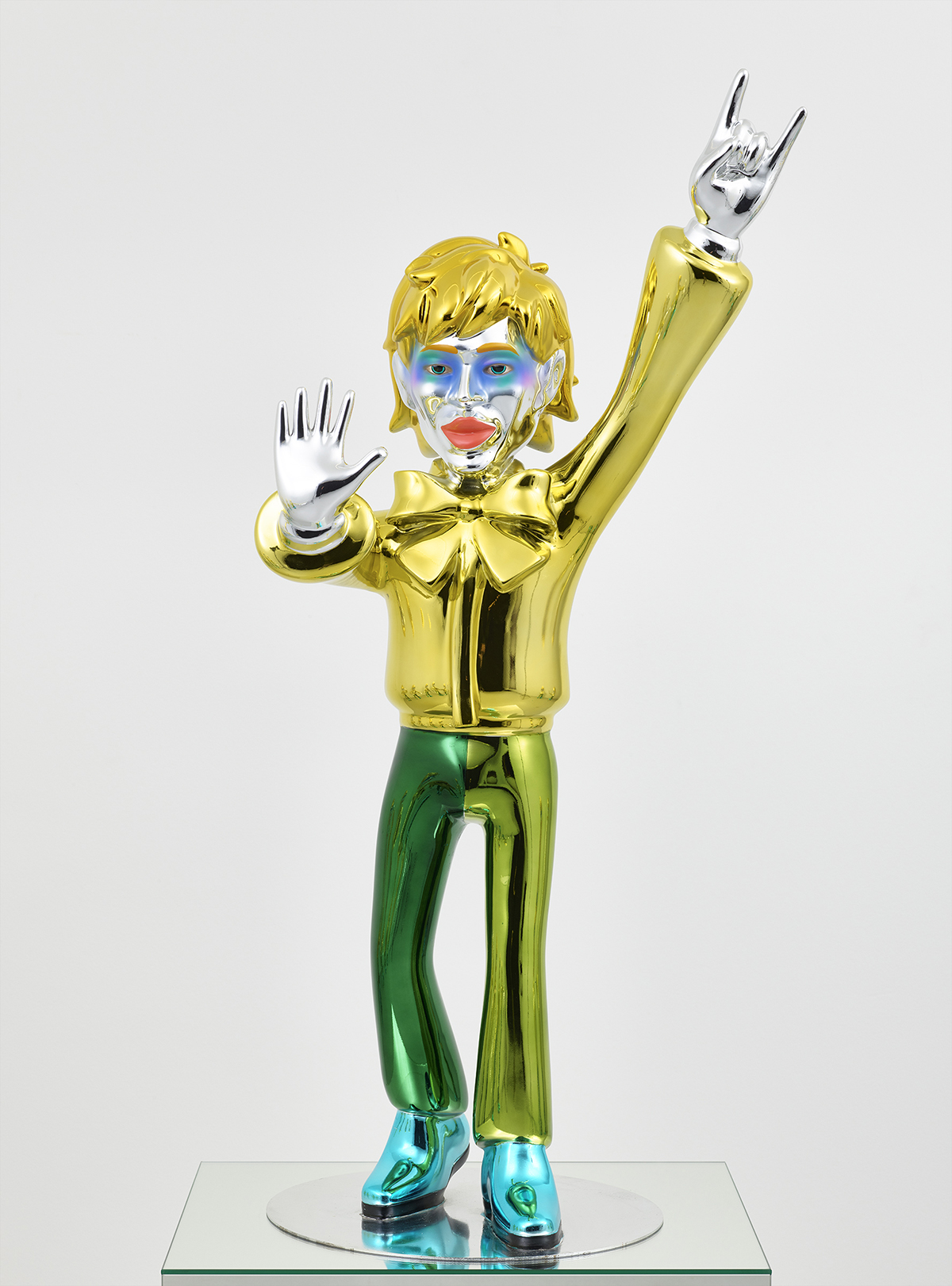
Virgin Mary (floating signifier) 2021
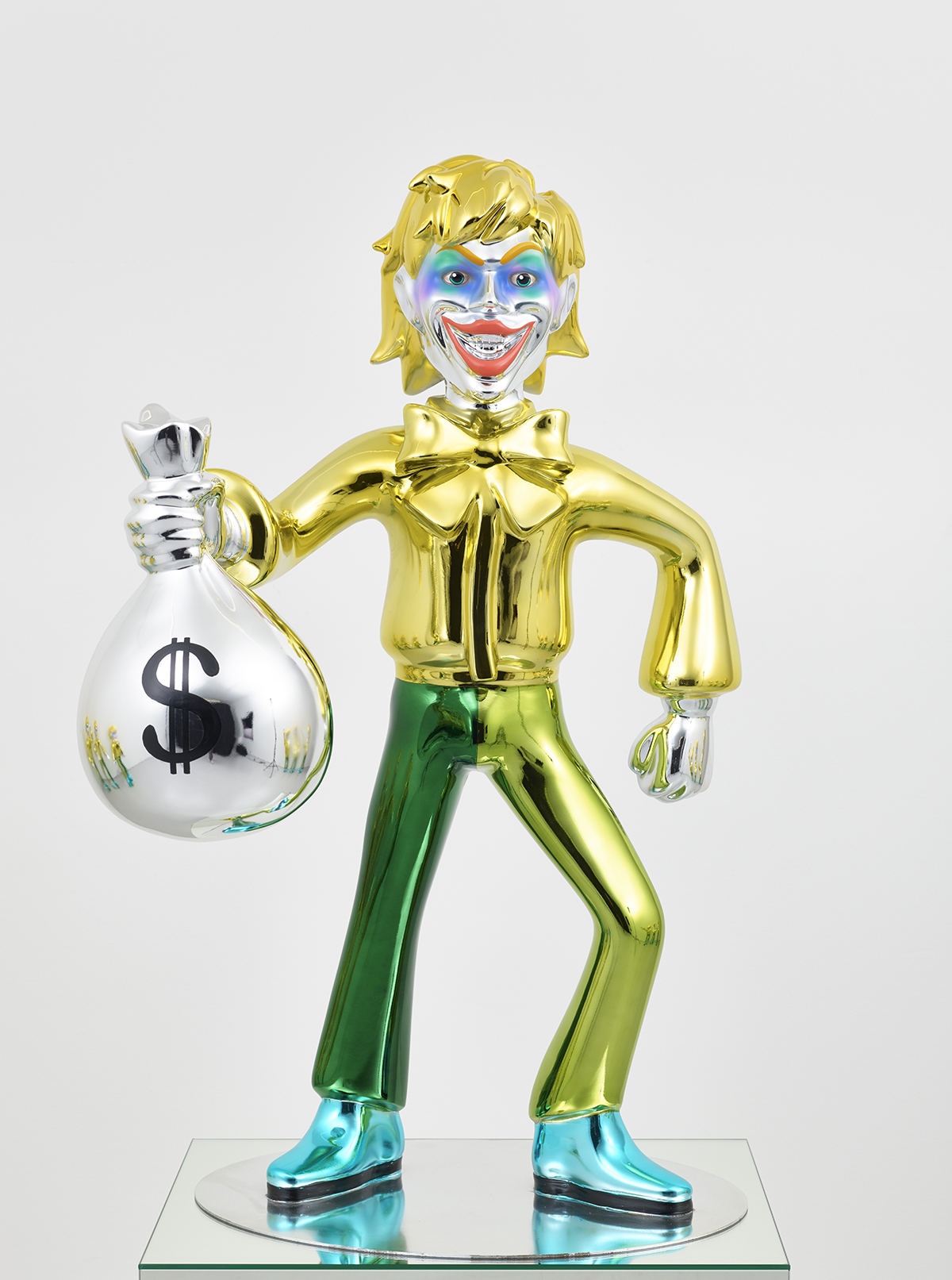
Money (floating signifier) 2021
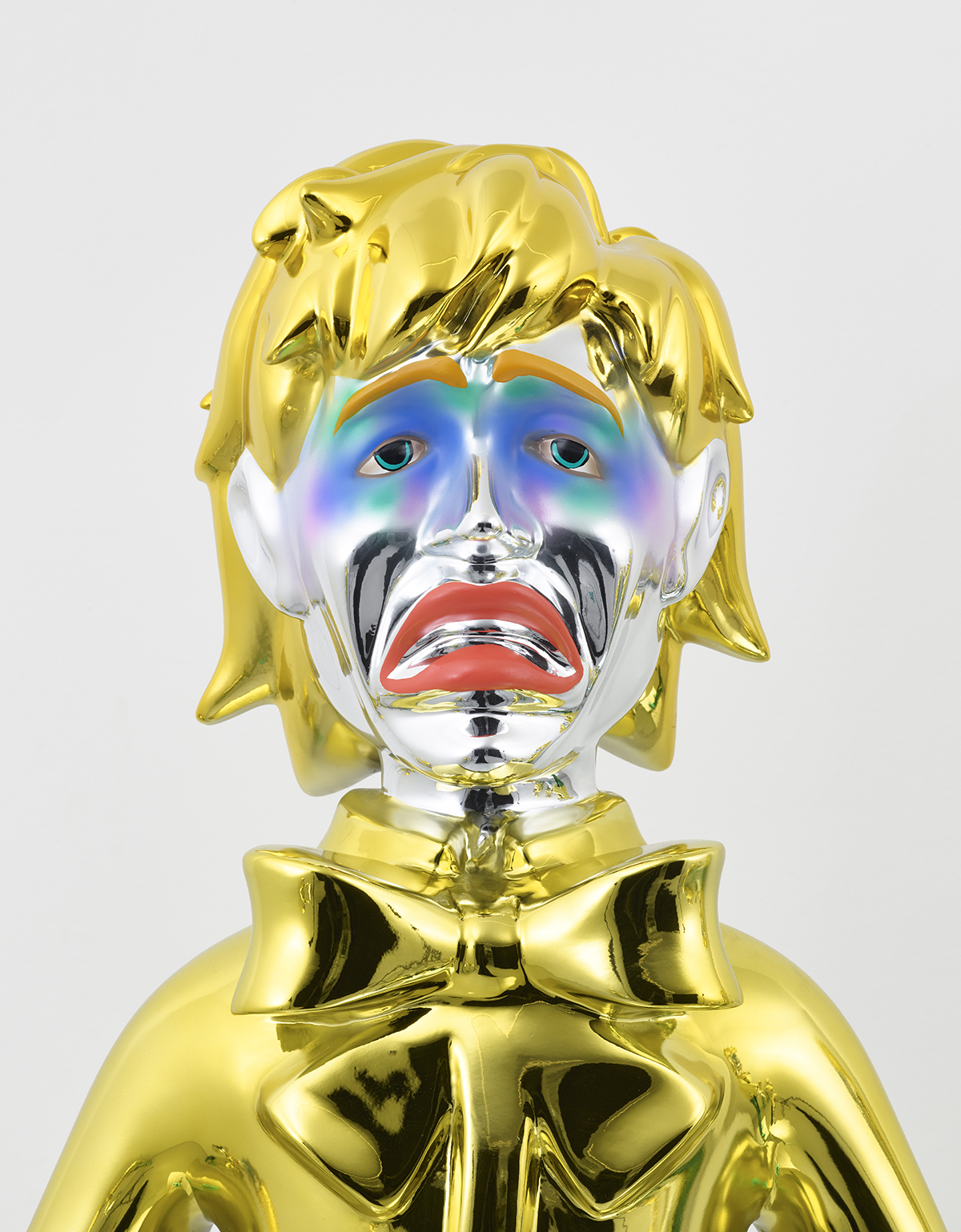
Stop (floating signifier) 2021
Esben Weile Kjær 4. nov. 15.46
I try to seek out people and situations that give me energy. Of course, it is not always easy but I am an extremely social person so I need a lot of physical contact with other people. I do not drink much alcohol at the moment, and I run a lot. I like to be at a party, but I often think the fun is before 3 o’clock so when it becomes too destructive I go home.
This whole art world we are both a part of is based on an extremely individualistic approach to the subject. I therefore think it is important for me not to make it become my whole identity. I like to be present in very different environments at the same time and I think that is healthy especially when traveling in the art world. It is definitely something that has also changed for me the last few years.
I am very interested in the gaze because it is the starting point for pretty much all visual art. My practice is very concerned with strategies of popular culture and they are all about getting the masses to look in the same direction. In those strategies also lies the desire for the spectacle and that is what I examine again and again in my work. The desire of the gaze and the images of desire. I love Hannah Arendt and I really agree with her in that quote I guess that’s also the reason why these topics continues to be interesting for me to investigate in my works.
What makes us insane is probably not to be looked at but rather being judged by the people that look at us, don’t you think?
Maria Kjær Themsen 9. nov. 13.47
Oh yes, the judging gaze is difficult to be around… and then, for me as a critic, that is often the way I’m paid to look: critically and even judging. I’m still very convinced that critique is an important part of the art scene – not least in these polarized times, where dialogue often is shut out before it even started.
So… let me look at your work: when I earlier this year experienced your performance HARDCORE FREEDOM at Copenhagen Contemporary, it was like being part of a party – only corona made it impossible to unfold in that way, so it turned out to be a party for the eyes only. But your work has such a strongly appealing energy, with dancing young bodies, spectacular choreography, and big signs with light, that you are never bored. While sitting there and watching the spectacle, the moving young bodies and listening to the loud music, I suddenly felt a certain melancholy. Actually, I felt that your whole work, even though it is so flashy, was about loneliness and outsiders, and I experienced a strong resemblance between you and the famous character Holden Caulfield from The Catcher in the Rye (1951). The way he walks the streets and feels completely lonely amongst other people. I know it is a highly subjective reading of your “character” in your shows, but can you in any way recognize this?
Or what kind of “portrait” or feeling are you interested in creating in your performative works?
Critic is everything we have! But there is a fine line between work and people. I think that’s important to remember.
Just landed in LA so my head is a bit weird.
I can totally see what you mean. In my performances the bodies kind of fails in doing something specific. In burn they try to strip and evacuate but they always fall. In Hardcore freedom they try to become a sexy image of youth but turn out to be tired and alone. It’s not nihilism cus they transform into something else. It’s a long complicated fight with the spectacle somehow. Or a dialog. For me the works has never been a celebration of extreme freedom. I simply do not believe in it. It’s a critical analysis of how youth, freedom and partying are illustrated in pop culture. Hardcore Freedom examines the double meaning of desire and loneliness / desperation and exhaustion. It’s a film set on which everyone is posing for the cameras, and no-one really knows what they are doing, but they are playing their part.
I’m happy you see these layers in the work as well. Not everyone does…
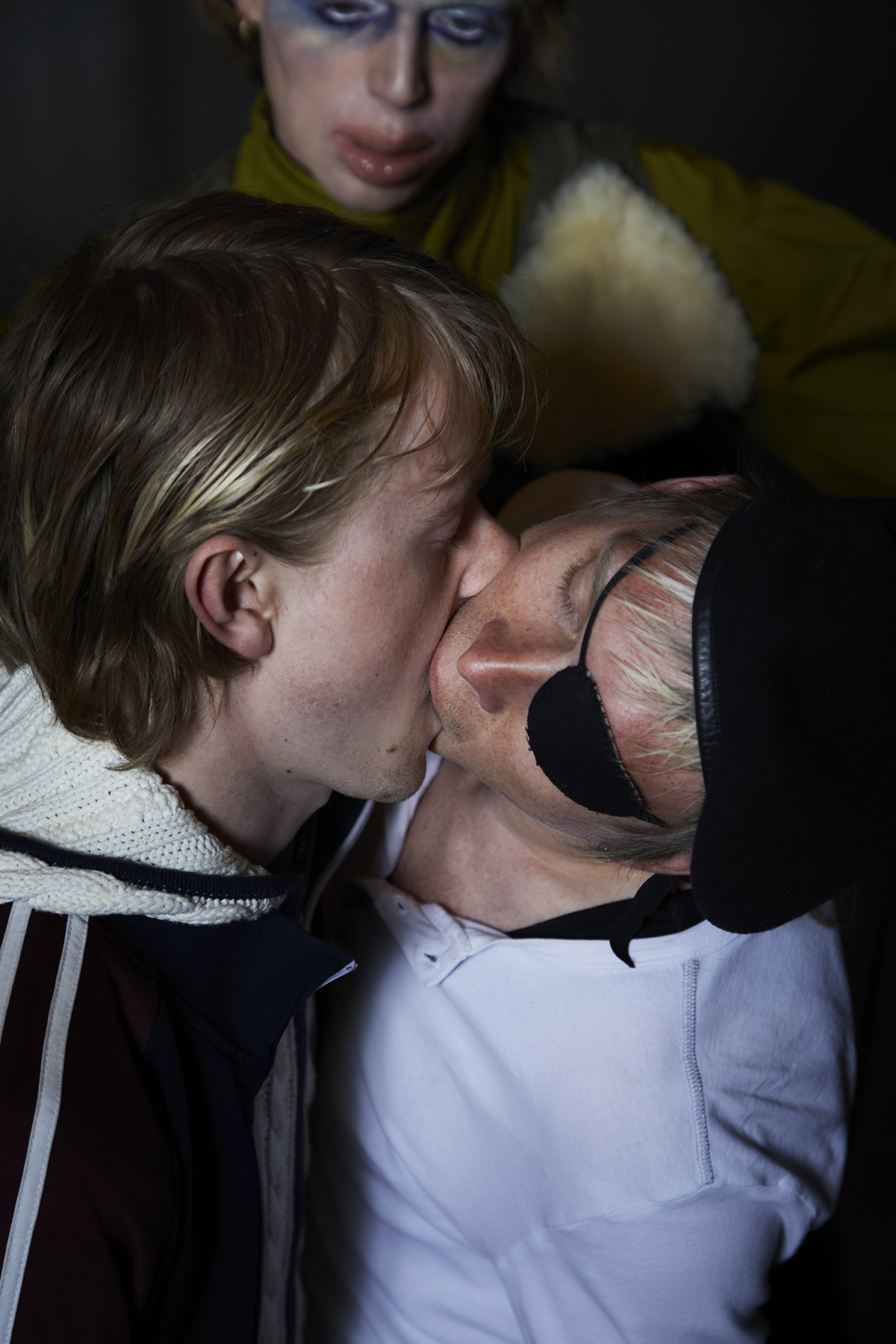
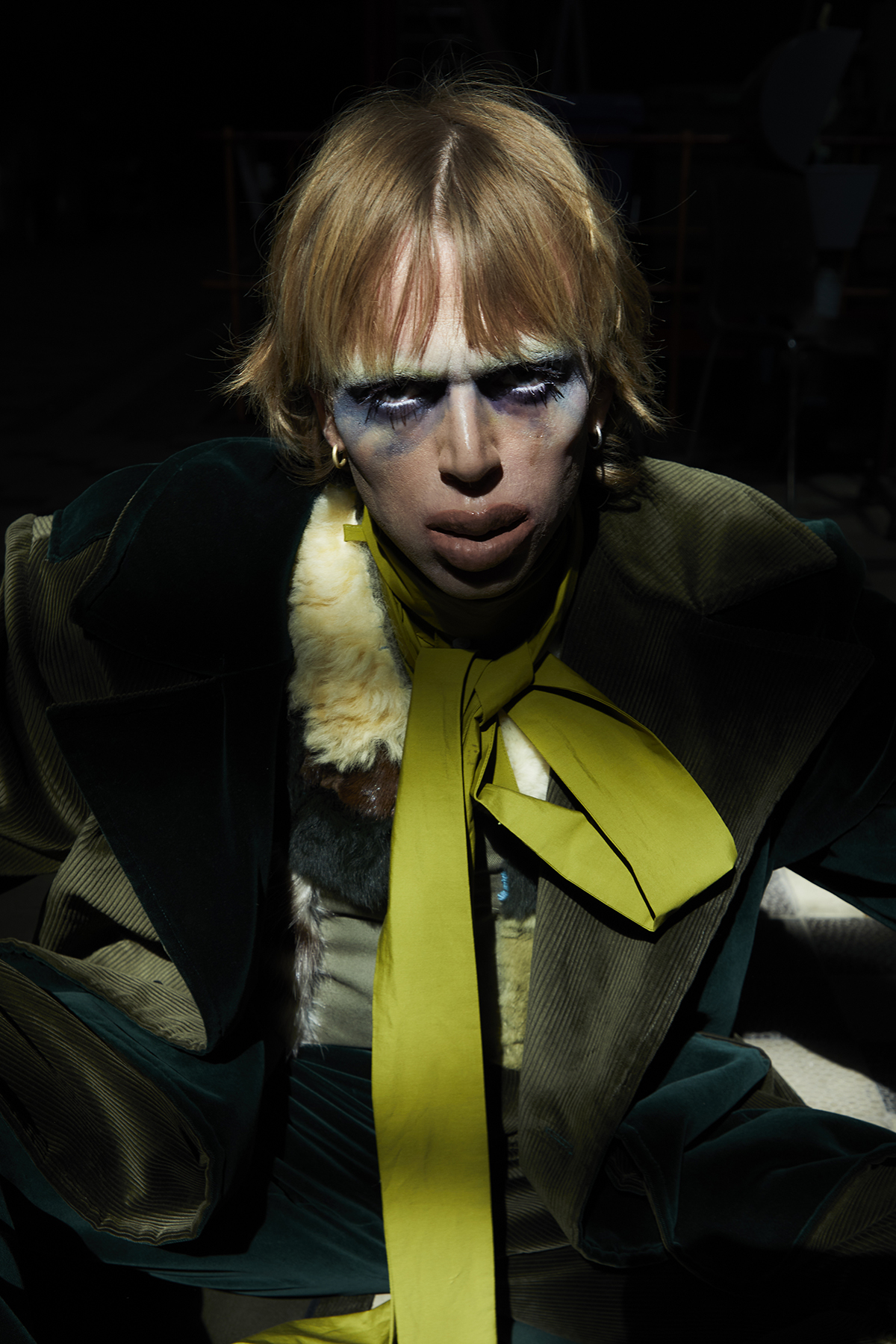
Maria Kjær Themsen 15. nov. 14.19
Dearest Esben
Wow, I just looked through your Instagram to find out what you are doing in LA… You have the most thrilling ability to make everything – be it a key chain, a piece of candy or a shop window – into a glittering symbol of exchange, sex, and success. It is very seductive. What exactly was going on in LA?
…and one thing that I wanted to ask you about: are you most interested in playing the game of the gaze of desire – dramatize it – so we understand the structure of its power? Or are you interested in extending it, making room for other desiring gazes than the one usual suspect: the white male? Is it even possible?
All the best, and see you soon
M
Esben Weile Kjær 18. nov. 01.12
I showed some sculptures at shoot the lobster in LA last month. I couldn’t go because of the travel ban so now when I got the chance to travel I did it. I’m working on some more stuff in LA next year that I can’t say more about at the moment, but it was great to catch up with the people IRL.
Hmm I think that’s connected for me. To understand a structure is the starting point for a critique I think. In my recent work (hardcore freedom as an example), I try to raise a critique of youth as commodity, and I do that through an investigation of the gaze of desire. It’s a method.
I have experienced that many curators want to talk about this… If artworks are just reproducing specific structures and don’t criticize them. I don’t really understand what it means. What is the aesthetics of critique? What does a critique look like? If everything is political, do we then need to write political statements over every artwork to understand them as political?
See you very soon. I’m super exited for you to see the book!
Love / E
Maria Kjær Themsen 18. nov. 09.23
Yes, I understand your point, and I think you will meet this question repeatedly, because you leave people in doubt, and this space for reflection is sometimes misunderstood as a lack of clear critique. However, I see what you are into, and I also think that what you are working with – the culture of desire, gaze, and consumption – is at a peaking point in these times. The young generations may be concerned about the environment, about inequality and discrimination, but there is not much rebellion against our global consumer culture. I hope I’m wrong though.
Hey, I’m really looking forward to seeing your book – can you tell a little about it?
Esben Weile Kjær 18. nov. 14.49
I think so too. And that’s why I think it’s interesting to ask the other way around. I totally understand your point and I think this ambivalent position is why I’m a visual artist. It’s difficult to stay in that grey zone in academia, journalism, litterateur but an image can somehow stay open I think. I believe that other positions are possible than pro or against. I’m really trying hard not to be a politician 😉
The book is kind of a monograph on my art practice published and edited by Roulette Russe and written by 8 art historians and curators. There are lots of images! It feels a bit dump to make a monograph on a practice of an artist who still studies and is 29 years old. I more see it as manifestation for the very collaborative work I have been doing while studying. I hope you will find it interesting.
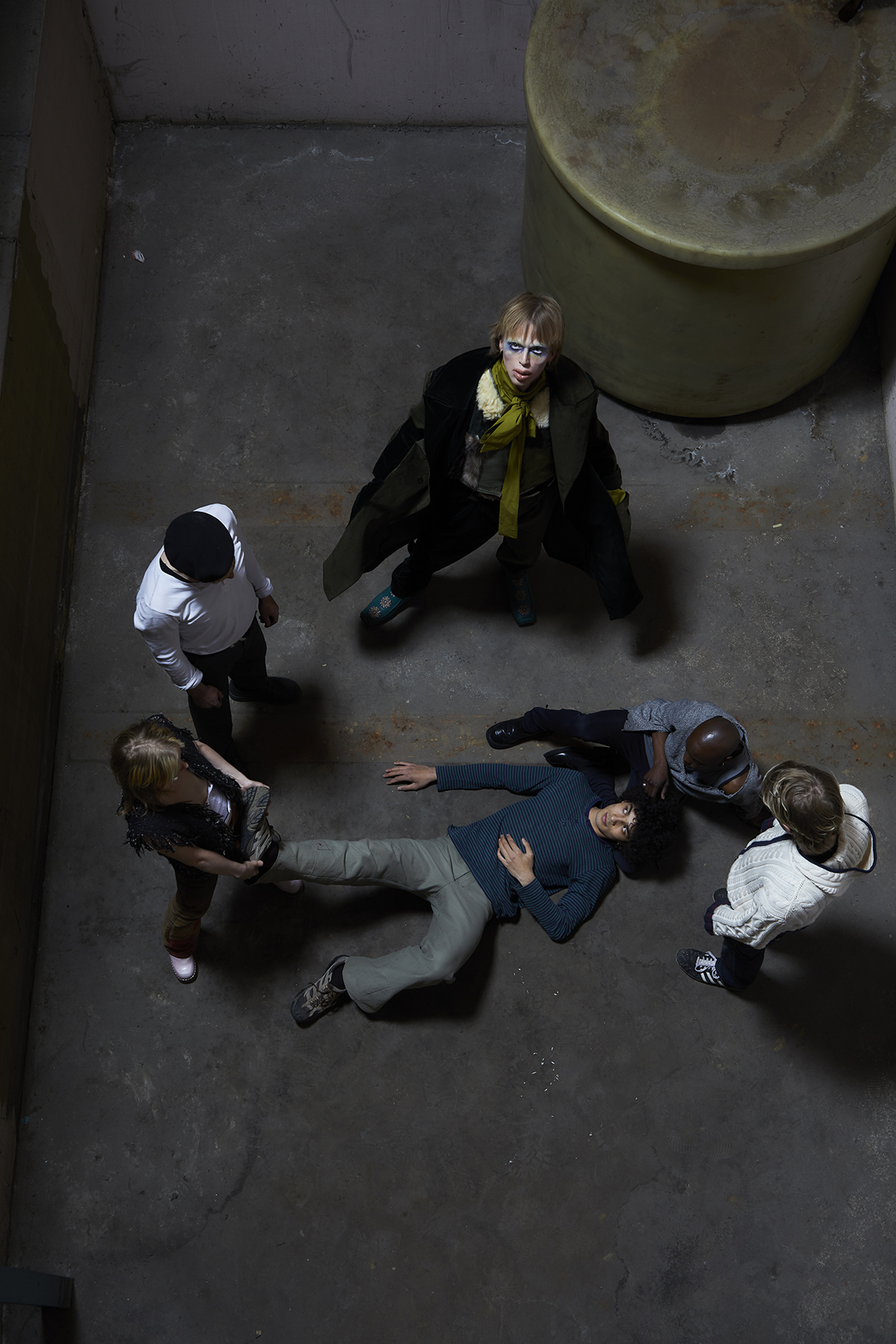
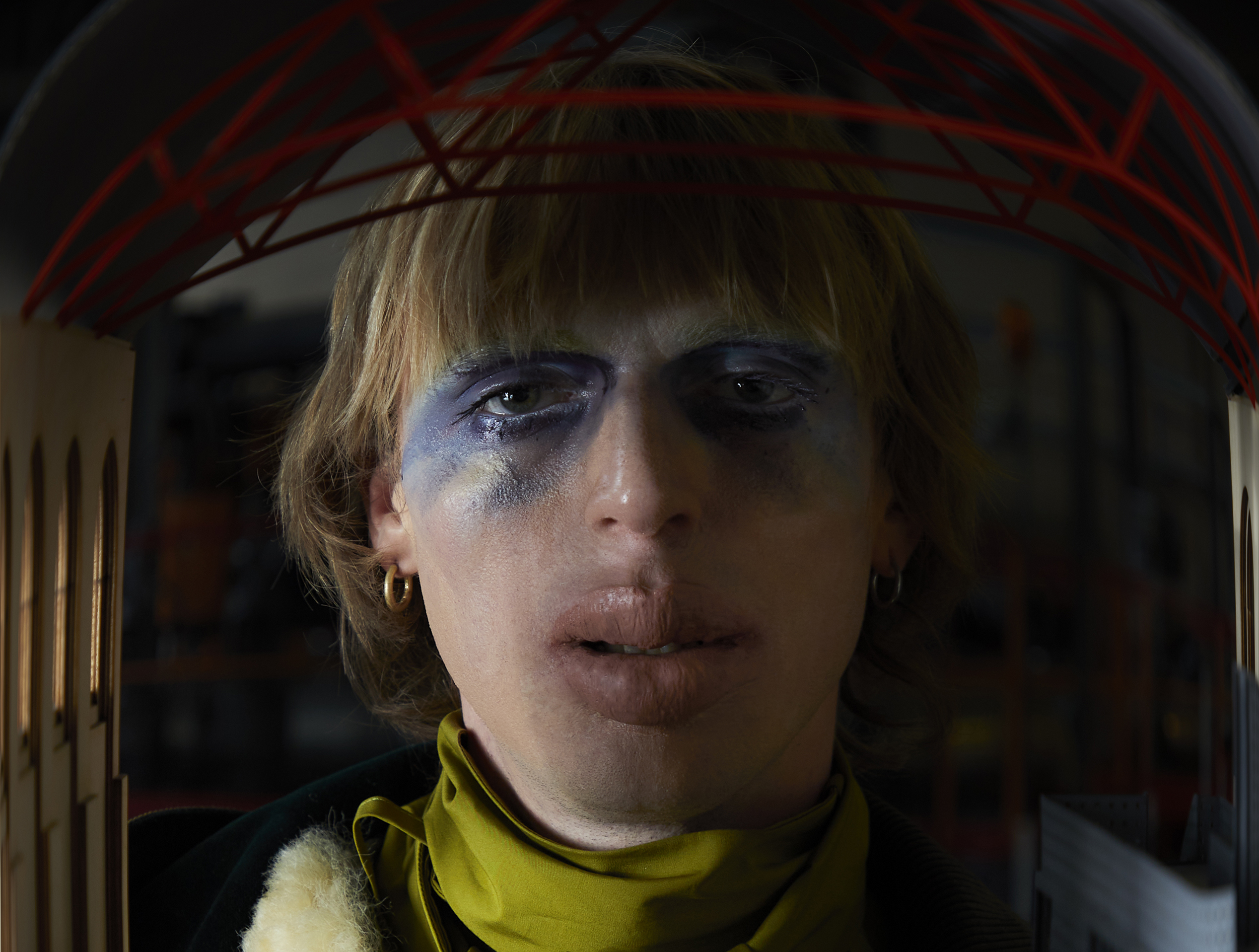
Maria Kjær Themsen 26. nov. 10.14
Oh Esben, what a spectacular dinner and celebration of your book the other night! Thank you. I enjoyed the loving vibe so much, and you shined like a star.
I have flipped and read through the impressive book, and stared at all the bodies, the performances, the drags, the erotic powerplays, the staged dramas, and I am so impressed by your collective way of working, and then still being able to work with such a clear and stringent style.
When you talked about your way of working with the gaze, with consumer culture and capitalist strategies, I thought that there seems to be such a strong collective energy in your works. What does your friends and collaborative partners mean to you and your work?
Esben Weile Kjær 30. nov. 2021 14.47
Thank you for being there. I also had a very lovely night!
Happy you like the book.
It’s very different from piece to piece how I work but I think my whole practice come from a very collaborative place. Many of my performances is about strategies of communication and sometimes I also feel the material I work with is communication both how the performers communicate with each other but also how the performance communicates with the world.
I have tried to work as an art collective but I don’t think that’s for me. I need my autonomy as an artist.
Many of the artist that participate in my works have their own art practises. I think we talk a lot about all these topics. We have lots of discussions and don’t always agree about everything but it can be super interesting to visits other people’s work as performer. I also do that myself and I love to take active part in others work without having the responsibility of taking the artistic decisions. Collectivity can be many things and for me this way of activating many people and I sometimes work more as a director. It’s very interesting and challenging.
I don’t really know if it’s an answer to your question?
My friends are my colleagues and our ongoing conversation means everything for the way I understand art.
Love from Frankfurt
| Photography | Joseph Kadow |
| Sculpture photography | Malle Madsen |
| Assistance | Betty Krag |

